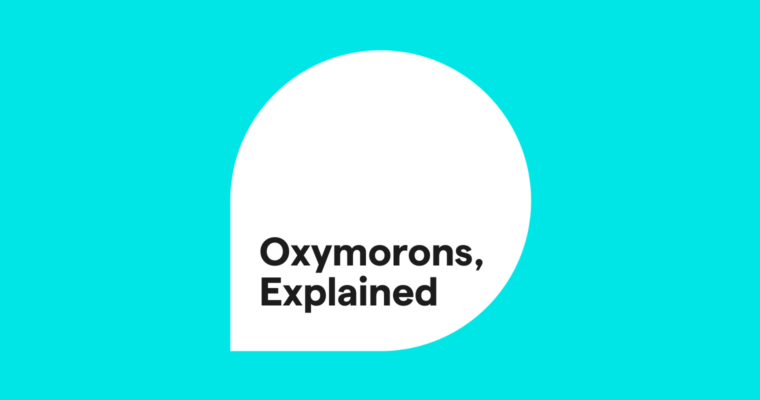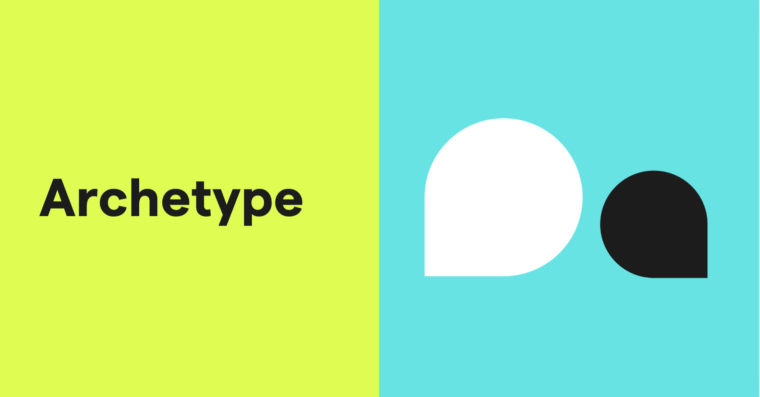
- An oxymoron is a figure of speech that combines contradictory words with opposing meanings, like “old news,” “deafening silence,” or “organized chaos.”
- While they may initially seem illogical, oxymorons make sense in context and are used for emphasis, irony, humor, or dramatic effect.
- Oxymorons are commonly found in everyday speech, literature, and rhetorical writing. Some of the most well-known examples come from Shakespeare’s plays, classic poetry, and commonly used modern phrases.
- Writers use oxymorons to make language more engaging, create humor, and present familiar words in a new, thought-provoking way.
- While both oxymorons and paradoxes involve contradictions, oxymorons pair contradictory words, whereas paradoxes present seemingly contradictory ideas that reveal deeper truths.
Oxymorons play a fascinating role in language. Here, we’ll break down everything you need to know about oxymorons, including common examples and how they’re used in speech and writing.
Table of contents
What is the purpose of oxymorons?
Oxymoron definition
An oxymoron combines two contradictory or opposite words to create a paradoxical or ironic effect. Oxymorons are often used for emphasis, humor, or to provoke thought.
Like a paradox, an oxymoron is what’s known as a “contradiction in terms,” although oxymorons and paradoxes are two different things, as explained below.
An oxymoron can be classified as a figure of speech and a literary device.
- As a figure of speech, an oxymoron uses contradictory terms to create a specific effect in language.
- As a literary device, an oxymoron is used in writing, poetry, and rhetoric to add depth, irony, or complexity to a text.
The word oxymoron is an ancient Greek word that most closely translates to something like “sharply dull” or “cleverly stupid.” In other words, the definition of oxymoron is itself an oxymoron.
Oxymorons have been used for millennia, and many have even become commonplace expressions in modern-day English.
Examples of oxymorons
Commonly used oxymoron examples
Here are some commonly used oxymorons that you may encounter in everyday speech and writing:
- accurate estimate
- alone together
- awfully good
- bittersweet
- climb down
- close distance
- grow smaller
- jumbo shrimp
- only option
- original copy
- passive-aggressive
- same difference
- seriously funny
- small crowd
- virtual reality
Oxymoron examples from literature
As rhetorical devices, oxymorons have been used in many different mediums, from political speeches to novels to stage plays. Here are some of the more famous oxymoron examples from historical literature:
“The bookful blockhead, ignorantly read,
With loads of learned lumber in his head …”
—Alexander Pope, “An Essay on Criticism”
“His honour rooted in dishonour stood,
And faith unfaithful kept him falsely true.”
—Alfred, Lord Tennyson, Idylls of the King
William Shakespeare’s Romeo and Juliet uses oxymorons to great effect, wherein “combining things that contrast” is an ongoing theme.
What is the purpose of oxymorons?
As with other literary devices like metaphor, onomatopoeia, and hyperbole, oxymorons have a few different purposes in writing, all of which can be useful in the right situation:
Use oxymorons for dramatic effect
As a contradiction of terms, an oxymoron stands out and elicits critical thinking. The reader must momentarily pause to comprehend and process the meaning—in other words, oxymorons make the reader think.
Oxymorons have deeper meanings and are more memorable than noncontradictory words, so they work great at key points in your writing to boost reader engagement. They also occasionally work well with figurative language to compound the power behind certain words.
Use oxymorons as entertainment
Oxymorons present an ideal opportunity to be clever or funny. The inherent setup of contradictory words works great for jokes and other witty statements. Consider these oxymoron examples:
Use oxymorons to present words in a new way
Placing contrasting words next to each other makes each one stand out more, just like placing contrasting colors together. Highlighting their differences accentuates their meaning, and the words come across stronger. That makes oxymorons a serious option in word choice.
Consider the oxymoron example of deafening silence. On its own, silence is fairly neutral—it can be calm or tense, depending on the context. But pairing it with deafening gives silence a distinct meaning, comparing it to a loud noise that draws extra attention. This presents the word silence in a unique way that’s particularly expressive.
Oxymoron vs. paradox
The main difference between an oxymoron and a paradox is that oxymorons use contradictory words whereas paradoxes use contradictory ideas.
We’ve already defined oxymorons above, so let’s explore paradoxes. A paradox is a statement that technically contradicts itself but remains true nonetheless. It may seem illogical or unrealistic, but upon reflection, it’s based on reality and stems from valid reasoning.
An oxymoron is usually just two words (sometimes one, as in “bittersweet”), but a paradox is an entire statement, usually a standalone sentence or even a whole paragraph.
Consider these paradox examples from Oscar Wilde:
Oxymorons are often confused with paradoxes—after all, both are textbook contradictions of terms. Despite the similarities, however, oxymorons and paradoxes are two different literary devices, each with unique usage.
By extension, oxymorons deal with the contrast between the meanings of words, but paradoxes focus on the contrast between complete ideas. The scope of a paradox can go much deeper, drawing on complicated themes and philosophical concepts. The scope of oxymorons, however, is limited only to the scope of the individual words used.
Oxymoron FAQs
What is an oxymoron?
An oxymoron is a figure of speech that pairs contradictory words within a phrase to create a striking or paradoxical effect. As a literary device, it enhances language by making certain expressions more memorable and thought-provoking.
What are some oxymoron examples?
Oxymorons are common in everyday speech. “Awfully good,” “bittersweet,” “same difference,” and “original copy” are a few oxymoron examples.
What is the difference between oxymorons and paradoxes?
Oxymorons combine contradictory words, but paradoxes combine contradictory ideas. Usually, oxymorons are made up of just two words, but paradoxes are complete sentences, sometimes entire paragraphs.
Why do writers use oxymorons?
Writers use oxymorons to create emphasis, irony, or humor, making language more engaging. They can also present words in a fresh way, enhance literary themes, or make readers pause and think about the deeper meaning of a phrase.
Are oxymorons always intentional?
Not always. While many oxymorons are deliberately used for rhetorical effect, some appear naturally in language over time. For example, phrases like “old news” or “original copy” became widely accepted despite their inherent contradictions.





